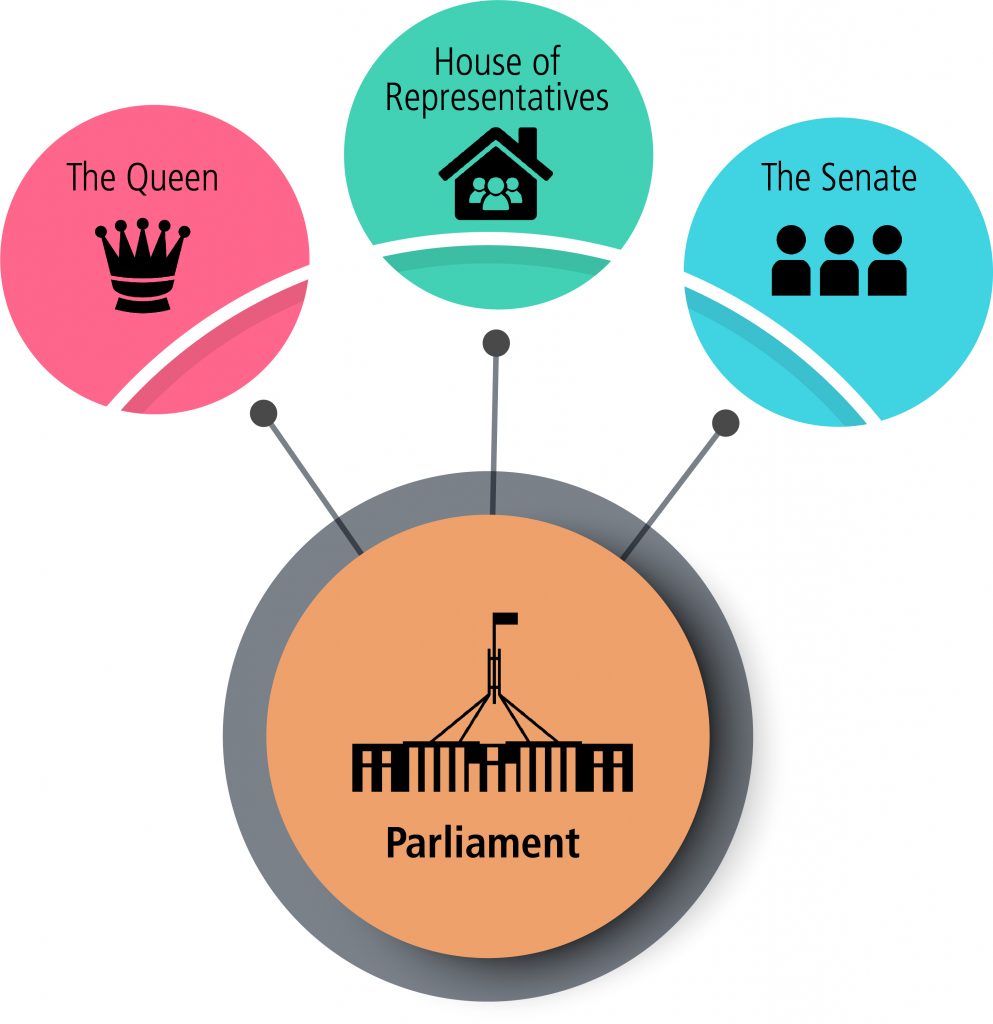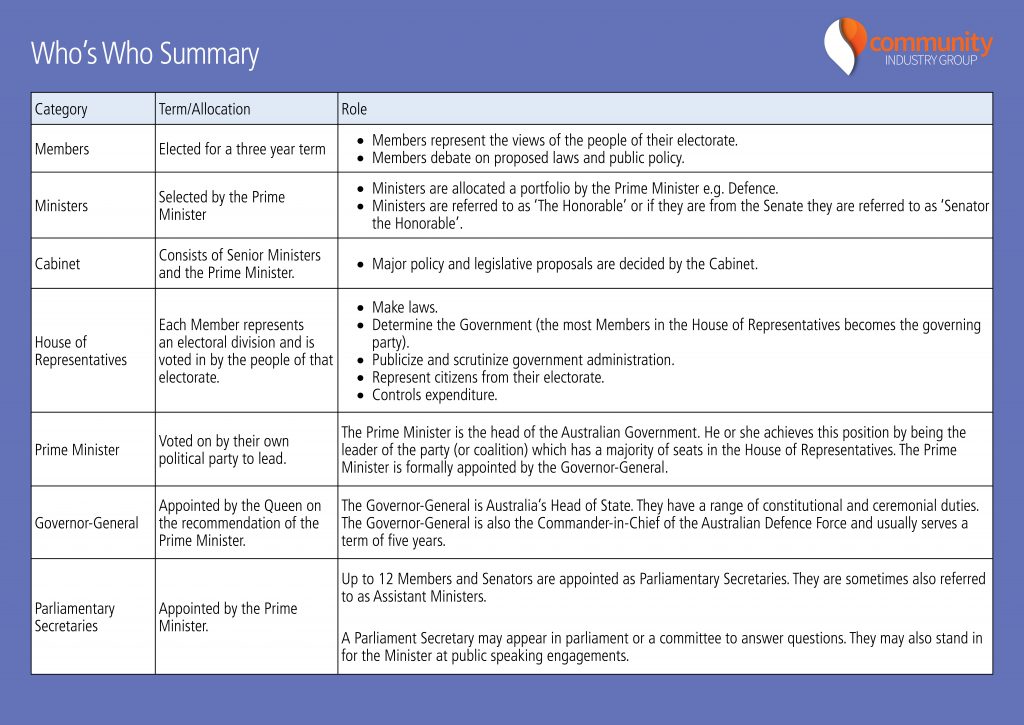Online Training
Federal Parliament

Parliament consists of:
The Queen
The Queen is represented in Australia by the Governor General. The Governor-General’s official title is Governor-General of the Commonwealth of Australia.
The Governor-General has a range of constitutional and ceremonial duties. The Governor-General is also the Commander-in-Chief of the Australian Defence Force.
Under the Australian Constitution, the only action performed by The Queen is the appointment of the Governor-General (on the advice of the Australian Prime Minister).
House of Representatives
The House of Representatives has 151 Members (in 2021). Each Member represents an electoral division.
The Government and Opposition face each other on opposite sides. Government Members sit to the right of the Chairperson (also known as the Speaker) and the Opposition Members sit to the left. Minor party members (e.g. The Greens and Independents) sit in the Cross Benches.
The House of Representatives has five main functions:
- Makes laws: Consideration and passing of new laws and amendments or changes to existing laws.
- Determines the Government: After an election the political party (or coalition of parties) which has the most Members in the House of Representatives becomes the governing party. The leader of this party becomes Prime Minister and appoints Ministers from amongst the party’s Members and Senators.
- Publicises and scrutinises government administration: This includes debating legislation and policies, committee investigations and asking questions of Ministers.
- Represents the people: Members may raise concerns from citizens during debate or with Ministers or government departments.
- Controls expenditure: The Government must pass laws to collect taxes or spend money. Expenditure is examined by Parliamentary Committee.
For the current list of Members click here.
The Senate
The Senate consists of 76 senators, twelve from each of the six states and two from each of the mainland territories. It shares the power to make laws with the other House of Parliament, the House of Representatives.
The voting system for the Senate gives greater opportunity to minor parties so the government often does not have majority support in the Senate.
Watch Parliament in Action
You can watch Parliament in action live here.
Recordings of latest events like press conferences are also available here.
Who’s Who in Parliament?

For an A4 printable pdf of the Who’s Who Summary click here.

